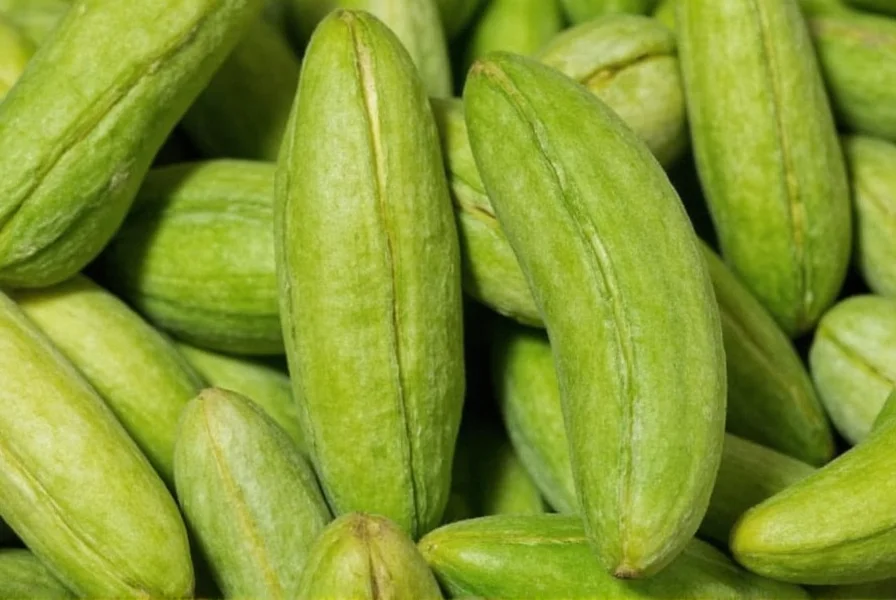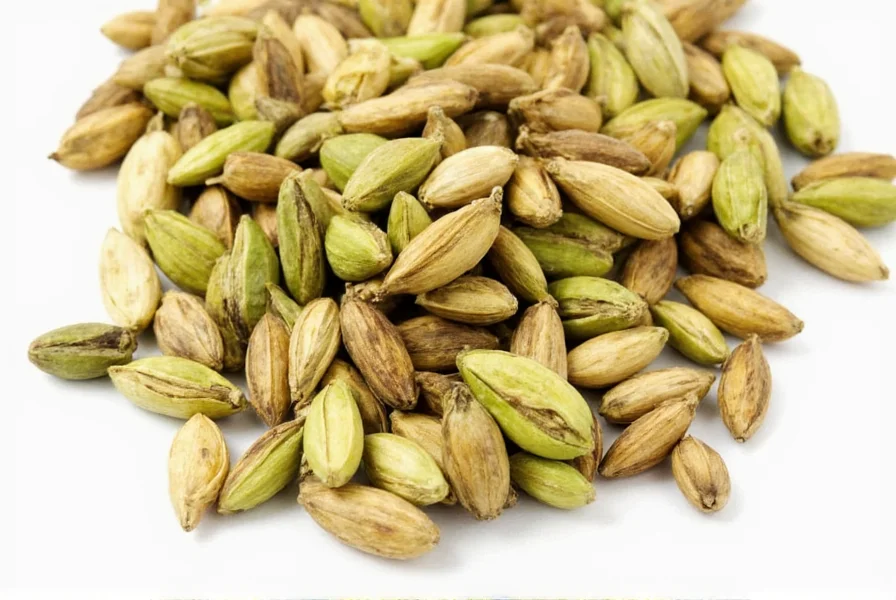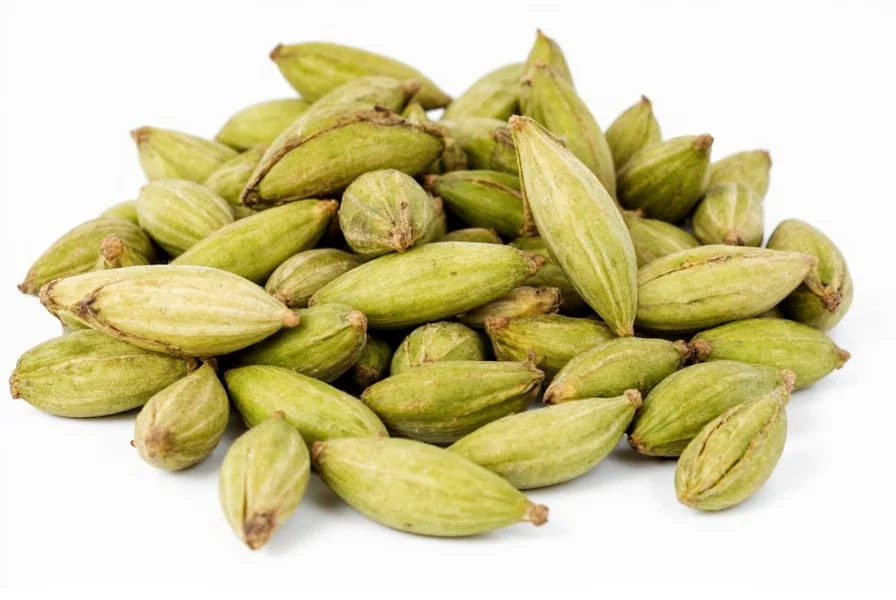Cardamom (Elettaria cardamomum), often called the “Queen of Spices,” has been prized for millennia across Middle Eastern, Indian, and Scandinavian cultures. This aromatic spice comes in green and black varieties, with green cardamom being more common in sweet applications and black cardamom preferred for savory dishes. Understanding cardamom uses reveals why this expensive spice remains a kitchen staple worldwide.
What Is Cardamom?
Native to India's Western Ghats, cardamom belongs to the ginger family (Zingiberaceae). The spice comes from the dried seeds of the plant's small pods. Green cardamom pods contain tiny black seeds with a complex flavor profile—citrusy, herbal, and slightly minty with eucalyptus notes. Black cardamom has a smokier, more intense flavor due to the drying process. When exploring cardamom uses, it's essential to understand these varieties as they serve different culinary purposes.

Culinary Applications of Cardamom
Chefs and home cooks value cardamom for its versatility in both sweet and savory preparations. The spice works exceptionally well in dishes where subtle complexity matters more than overpowering heat.
Baking and Desserts
Scandinavian baking traditions feature cardamom prominently in sweet breads like Swedish kardemummabullar and Finnish pulla. In Middle Eastern cuisine, it flavors desserts such as ma'amoul cookies and rice pudding. When grinding cardamom for baking, use freshly cracked seeds for maximum flavor impact. Cardamom pairs beautifully with citrus, chocolate, and other warm spices like cinnamon and cloves.
Beverages
Cardamom tea benefits extend beyond flavor—the spice enhances digestion while providing a soothing aroma. In the Middle East, cardamom-infused coffee (qahwa) represents hospitality. Indian chai often includes cardamom among its spice blend. For optimal extraction, lightly crush whole pods before steeping. Many people seeking natural digestive aids appreciate cardamom tea benefits for settling the stomach after meals.
Savory Dishes
Cardamom plays a crucial role in Indian garam masala and Middle Eastern baharat spice blends. It enhances rice dishes like biryani, complements lamb and chicken curries, and adds depth to vegetable stews. Black cardamom works particularly well in long-cooked dishes where its smoky notes can develop fully. Understanding cardamom in Indian cuisine reveals how this spice balances complex flavor profiles without dominating them.
| Cardamom Type | Best Culinary Uses | Flavor Profile |
|---|---|---|
| Green Cardamom | Baked goods, desserts, coffee, tea | Citrusy, floral, slightly sweet |
| Black Cardamom | Curries, stews, meat dishes | Smoky, camphorous, intense |
| Ground Cardamom | Quick breads, spice blends | Milder, less complex |
Traditional Medicinal Uses
Traditional medicine systems have utilized cardamom for centuries. Ayurvedic practitioners recommend cardamom for digestive issues, while Traditional Chinese Medicine incorporates it for respiratory conditions. Many cultures chew cardamom seeds after meals to freshen breath—a practice with scientific backing due to the spice's antimicrobial properties.
Digestive Health
Cardamom for digestion remains one of its most validated traditional uses. The spice stimulates digestive enzymes, reduces gas and bloating, and may help prevent ulcers. Many people incorporate cardamom into their daily routine by adding it to tea or chewing whole pods after meals. Research suggests cardamom's active compounds relax gastrointestinal muscles while promoting healthy gut bacteria.
Oral Health Benefits
Cardamom's natural antibacterial properties make it effective against oral pathogens that cause bad breath and tooth decay. Chewing cardamom seeds stimulates saliva production, which helps neutralize acids in the mouth. Some natural toothpaste formulations include cardamom for its cleansing and refreshing qualities. Cardamom for bad breath represents one of the most practical everyday applications of this spice.

Scientific Research on Health Benefits
Modern research increasingly validates traditional cardamom uses, particularly regarding its antioxidant and anti-inflammatory properties.
Antioxidant Properties
Studies show cardamom contains high levels of antioxidants, including terpenes, flavonoids, and polyphenols. These compounds combat oxidative stress, potentially reducing the risk of chronic diseases. One study published in the Indian Journal of Biochemistry & Biophysics found cardamom supplementation significantly increased antioxidant status in participants.
Cardiovascular Support
Preliminary research suggests cardamom may help regulate blood pressure and improve lipid profiles. Animal studies indicate cardamom extract can reduce cholesterol levels, though more human research is needed. The spice's potassium content may contribute to its potential blood pressure benefits.
Practical Tips for Using Cardamom
To maximize cardamom uses in your kitchen and wellness routine, consider these practical recommendations:
- Storage: Keep whole pods in an airtight container away from light; they retain flavor for 6-12 months
- Preparation: Crush pods gently with the back of a knife to release seeds before use
- Substitutes: When unavailable, combine equal parts cinnamon, ginger, and cloves
- Dosage: For medicinal uses, 1-3 pods daily or 1/4-1/2 teaspoon ground cardamom
Safety Considerations
Cardamom is generally safe when consumed in culinary amounts. Those with gallstones should consult a healthcare provider before using cardamom medicinally, as it may stimulate bile production. Pregnant women should avoid medicinal doses but can safely consume cardamom in food. Rare allergic reactions may occur, particularly in individuals sensitive to other members of the ginger family.
Conclusion
From enhancing culinary creations to supporting digestive health, cardamom uses span centuries and cultures. This versatile spice offers both immediate sensory pleasure and potential long-term health benefits. Whether you're exploring cardamom in Indian cuisine, seeking natural digestive aids, or simply wanting to expand your spice repertoire, understanding the full spectrum of cardamom applications enriches both your kitchen and wellness routine. The growing body of research on cardamom medicinal properties suggests this ancient spice will continue to earn its place in modern kitchens and health practices.
Frequently Asked Questions
What are the main differences between green and black cardamom uses?
Green cardamom has a sweeter, more floral flavor ideal for desserts, baked goods, and beverages. Black cardamom has a smokier, more intense flavor better suited for savory dishes like curries and meat stews. Green cardamom works well in delicate applications where its nuanced flavor can shine, while black cardamom withstands longer cooking times in robust dishes.
How much cardamom should I use for digestive benefits?
For digestive support, chew 1-3 whole cardamom pods after meals or add 1/4 to 1/2 teaspoon of ground cardamom to tea. You can also prepare cardamom water by steeping crushed pods in hot water for 10 minutes. Consistent daily use at these moderate amounts provides digestive benefits without risk of side effects for most people.
Can cardamom help with bad breath?
Yes, cardamom effectively freshens breath due to its natural antibacterial properties and pleasant aroma. Chewing whole cardamom seeds after meals kills odor-causing bacteria while stimulating saliva production. Studies show cardamom combats common oral pathogens better than many commercial breath mints, making it a natural and effective solution for maintaining fresh breath throughout the day.
What's the best way to store cardamom to maintain freshness?
Store whole cardamom pods in an airtight container away from light and heat. Properly stored, they retain optimal flavor for 6-12 months. Ground cardamom loses potency more quickly—use within 3-6 months. For longest shelf life, keep cardamom in a cool, dark pantry rather than near the stove. Freezing whole pods can extend freshness up to 2 years, though condensation may affect quality when thawing.
Are there any scientific studies supporting cardamom health benefits?
Yes, multiple studies validate traditional cardamom uses. Research shows cardamom has significant antioxidant activity, with one study in the Indian Journal of Biochemistry & Biophysics demonstrating improved antioxidant status in participants. Other studies indicate potential benefits for digestion, oral health, and blood pressure regulation. While more extensive human trials are needed, current evidence supports many traditional medicinal applications of cardamom.











 浙公网安备
33010002000092号
浙公网安备
33010002000092号 浙B2-20120091-4
浙B2-20120091-4